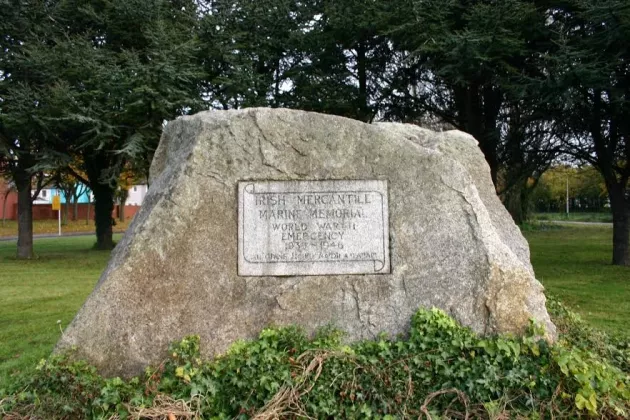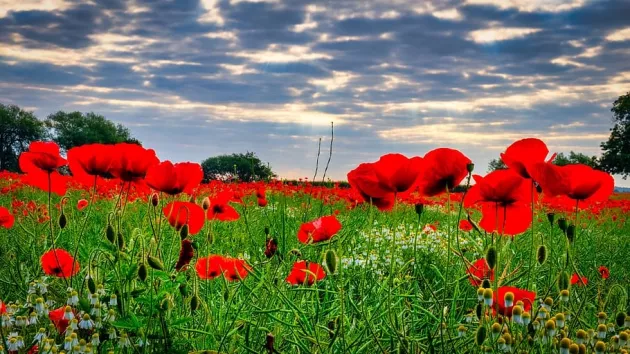Brighter Days Ahead: Irish Sailors Merchant Shipmen, a Memorial
Published on 13th November 2020

November the month of the Holy Souls is a month of commemorations and remembrances of all our dead and in particular our war dead.
Remembrance Day on the eleventh of November or Poppy day as it is sometimes called grew out of recognition of Armistice Day. The celebration of Armistice Day, traditionally a British reserve has spread worldwide and is referred to as Remembrance Day or Veterans Day depending on where you are. The second Sunday of the month, Remembrance Sunday, is when the religious and secular events are held to commemorate those who died in service during the Great War and the Second World War.
November is also the month when some Christians follow the age old tradition of visiting graveyards to gain indulgences for the souls of their loved ones. Documentaries on the two Great Wars of the twentieth century appear on our television screens and the old Pathé black and white films are rolled out along with stark photographic images from wartime to entertain us on the dark evenings throughout the month. There is always something new to discover as unseen material is still being sourced and the work on recording and preservation of new material is ongoing. It is only seventy five years since the end of the last war and it takes time for history to settle and we in Europe and elsewhere are still dealing with the consequences of those wars today.
The wearing of the poppy triggered a rethink on our Island of the two world wars and helped change attitudes to the extent that now the poppy is proudly displayed and worn by our politicians and our dignitaries without comment. My grandfather an active Fenian in his day wore the Easter Lily and had no problem wearing the poppy later in the year in memory of the many friends and colleagues he’d lost in both wars. My father died on Remembrance Sunday 1993, a Dublin docker and a Ringsend man. He spent the war years along with many Irish men working as a merchant seaman on British and Irish ships crossing the Atlantic in convoy and doing the Lisbon run ferrying essential goods in the most dangerous of times. Many of these ships were targeted and lost and thousands of men died on boats often not fit for purpose in the war years. When Irish ships went down fishing villages all over Ireland grieved the loss of their sons.

The recognition of the contribution of merchant seamen to the war effort was slow in coming, especially here in Ireland. This is often explained by anti-British sentiment at the time but old fashioned snobbery had its part to play as sailors were looked down on and seen as belonging at the bottom of the pile. The value of their contribution was dependant somewhat on the fall of old world values. To say they were unmarked by their experiences would be a lie and they rarely spoke about life at sea returning as they did to a ‘neutral’ country where no one wanted to talk of war preferring the word “emergency.” Today many of the survivors would be seen as suffering from PTSD and requiring treatment. Working in the hull of ships shovelling coal into furnaces knowing you are the target of German submarines, mines, war ships and planes not to mention the vagaries of the ocean itself took very brave men indeed. For their troubles seamen were ‘laid off ‘at the end of the war and returned to their families and homes carrying in their hearts all the horrors of war at sea and facing unemployment. Many sought comradeship of their peers in the pubs and ale houses on the quays as only other seamen could understand their plight.
In these COVID times when many commemorations ceremonies have been cancelled. I hope there’ll be a poppy wreath around the anchor of the Merchant Seamen Memorial at City Quay. If you happen to be walking in the Sean Moore Park area there is a lesser known memorial to our wartime seamen near a housing estate in Ringsend. The roads on the estate are named after Irish ships sunk in the Second World War, the Bremen, Kerlogue, Cymric, Pine, Kyleclare, Isolda, Leukos and the Clonlara.
Stop if you have the time and take a look at the simple inscription on the large granite memorial stone that was placed on the green in 1984, “Irish Mercantile Marine Memorial World War 2” Emergency 1939-1946” “Ar dheis De go raibh a n-anam. “
The stone sits happily among a group of proud trees planted on the same day by local children. Against the open skies they form a wonderful tribute in recognition of all the Irish seamen who sailed in often inferior ships under the tricolour and sometimes the red ensign as part of the struggle for the free world. Walk on a little further towards Sandymount strand and you’ll find two stones, the Sundial sighting stone which is 150 metres North West of the Sun Pillar marker stone facing the strand. ‘An Gallán Gréine’ and ‘An Clog Gréine’ are both indicators of the winter solstice when the sun rises over Killiney hill and obelisk in the distance on the 21st of December promising extra light and bringing hopes of spring with an end to the darkness and gloom of November and December days.
Discover audio, and eBooks on the first and second world war via the link below.
Access eBooks/eAudiobooks on your phone, tablet or reader. Once you have installed the app, search for Dublin in the ‘Library’ field provided and then sign in using your library membership card number and PIN. Watch our how to video on Borrowbox. Members of other library authorities will need to log in using a different link.
Irish Sailors Merchant Shipmen, a Memorial by Elizabeth Buckley in Pearse Street Library.